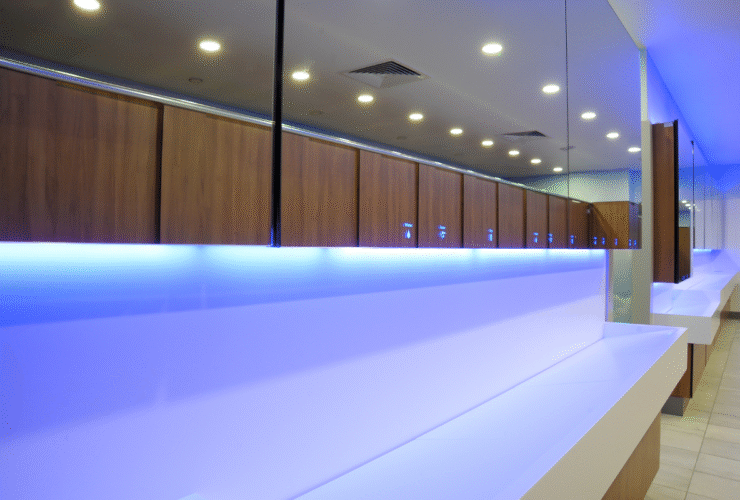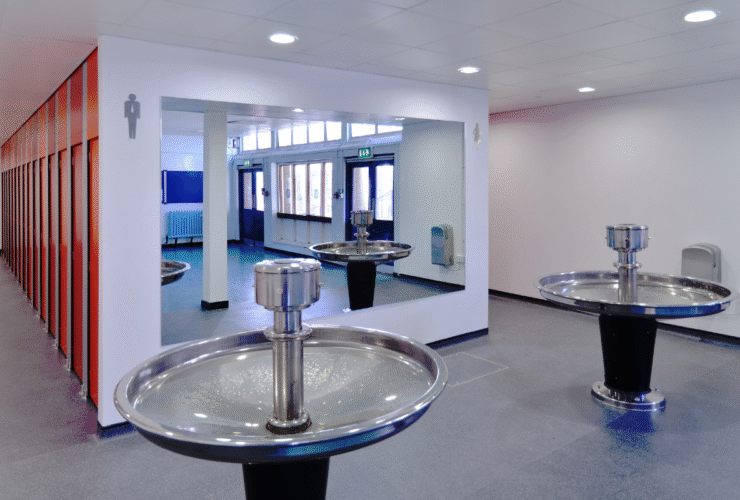In modern washroom design, hygiene and efficiency are top priorities. Touchless technology—especially WC sensor flush systems and automatic sensor taps—has quickly become a must-have in commercial, hospitality, and school washrooms. These smart fixtures not only improve cleanliness but also create a sleek, contemporary look that can further enhance your washroom experience.
WC sensor flush: the future of toilet hygiene
A WC sensor flush system is an innovative upgrade from traditional flush mechanisms. Using advanced infrared sensors and electronic controls, it detects usage and triggers a precise, efficient flush by releasing water from a standard WC cistern.
Key benefits of automatic WC flush systems:
- Hands-free operation – reduces germ transmission and cross-contamination.
- Consistent water usage – delivers a measured flush volume for water efficiency.
- Built-in overflow protection – removes the need for an external warning pipe.
- Compatible with standard cisterns – no need for special plumbing modifications.
Considerations:
The primary requirement is a mains electrical supply. While battery-powered models exist, they may be less reliable for long-term use.
Why choose WC sensor flush? Beyond hygiene, a WC sensor flush gives any washroom a high-tech, professional aesthetic—ideal for modern offices, airports, and luxury venues.
Sensor taps: touchless water control meets style
Automatic sensor taps are another smart choice for creating a hygienic and user-friendly washroom. They use motion detection to activate water flow, eliminating the need to touch tap handles.
Advantages of touchless sensor taps:
- Improved hygiene – minimises bacterial and viral spread.
- Modern appearance – enhances washroom design aesthetics.
- User safety – when paired with a thermostatic mixing valve, they prevent scalding and maintain balanced water temperature.
Points to note:
- Power supply options – mains-powered versions are ideal, but battery models can be used where wiring isn’t available (with periodic battery replacement as maintenance).
- Long warranties – Some sensor tap manufacturers offer warranties of over 10 years, proving their durability and reliability.
Why touchless fixtures are worth the investment
Whether for a commercial restroom upgrade or a school washroom renovation, installing touchless WC flush systems and sensor-activated taps brings multiple benefits:
- Enhanced hygiene – perfect for high-traffic public spaces.
- Water and energy efficiency – controlled flush volumes and water flow.
- Improved user experience – no need to touch surfaces.
- Modern, clean design – boosts the overall look and feel of the washroom.
By adopting hands-free washroom fixtures, you’re not just following a design trend – you’re creating a cleaner, safer, and more sustainable washroom space.
WC sensor flush & sensor taps FAQs
- How does a WC sensor flush work?
A WC sensor flush uses an infrared sensor to detect when a toilet has been used. The sensor sends a signal to an electronic control unit, which activates a flush valve to release a precise amount of water from the cistern. - Are WC sensor flush systems worth it?
Yes. They reduce germ transfer, improve water efficiency, and give a modern appearance to your washroom – making them ideal for both commercial and school applications. - Do sensor taps save water?
Absolutely. Sensor taps only run while hands are under the spout, reducing unnecessary water flow compared to traditional taps. - What’s better: mains-powered or battery-powered sensor fixtures?
Mains-powered systems offer consistent performance with minimal maintenance. Battery-powered versions are easier to install but require periodic battery replacement – increasing maintenance requirements. - Do I need a thermostatic mixing valve for sensor taps?
Yes, in most cases. A thermostatic mixing valve ensures a safe and comfortable water temperature, preventing scalding. - How long do sensor taps last?
High-quality models can last many years. Some manufacturers even offer warranties of 10 years or more.



